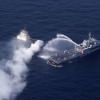Significance of BIMSTEC during turbulent times

On June 6, 2022, the Bay of Bengal Multisectoral Technical and Economic Cooperation (BIMSTEC), the subregional cooperation bloc, celebrated the silver jubilee of its establishment. Though the initiative began its journey with certain goals and ambitions, the world has changed drastically in the last 25 years – politically, economically, socially, and environmentally. The world is experiencing a severe economic crisis and has become more polarised and inward-looking, leading to unhealthy conflicts. Hence, the significance of BIMSTEC has resurfaced with fresh perspectives on the role of such regional blocs. It is also time to assess its performance when countries and regions continue to take newer and stronger pledges to strengthen their trade and investment links via comprehensive economic partnership deals.
With a total population of 1.7 billion, which accounts for 22 percent of the world's population, BIMSTEC countries have the potential for benefiting mutually and contributing to the global economy. The total GDP of BIMSTEC countries is about USD 3.6 trillion, which has the potential to grow further. Despite economic progress, the BIMSTEC members face inequality as the world does. Unemployment rate is also worrying in the BIMSTEC region. Over a long-term perspective, countries in the region have made significant progress. However, in the short-term and particularly in the aftermath of the Covid-19 pandemic, the socioeconomic performance of these countries has declined, same as the rest of the world. India and Thailand are the two largest participants in regional cooperation among the BIMSTEC nations. Even though India has the highest GDP growth rate, the Human Development Index (HDI) growth fell by 0.009 percent in 2021 compared to 2020. Indeed, except for Bangladesh and Sri Lanka, HDI in all other countries in the region declined in 2021. This emphasises the need for increased efforts not only for higher growth, but for better human development, particularly when the pandemic has reversed many achievements of these countries.
While talking about regional cooperation within BIMSTEC, trade cooperation is the most discussed topic since trade is critical for revenue generation and economic growth. There is a huge potential for trade within the BIMSTEC regional integration in many ways. However, the share of intraregional trade within BIMSTEC countries stands only at 5.9 percent, whereas intraregional trade within Asean countries accounts for about 24 percent. Currently, BIMSTEC countries trade only in a few categories of goods, so there is untapped export potential that can contribute to higher trade. Among the potential areas, energy has become very important for collaboration. The energy sector needs immediate attention to ensure energy security by continuation of energy flow in the region. In the context of the global energy crisis due to the Russia-Ukraine war, this has become even more important.
Within BIMSTEC, there are countries with specific needs due to specific circumstances. For example, Bangladesh and Nepal are the two least developed countries (LDCs) which will graduate from the LDC status in 2026. The graduation will result in a loss of various international support measures from the international community, including developed countries and various international organisations. LDCs will not receive duty-free, quota free (DFQF) market access in developed and developing countries, which could lead to a decrease in trade. Without preferential market access and DFQF benefits, exports will become more expensive, leading to a loss of competitiveness and lower export income.
One of the problems in case of increasing trade is the existence of non-tariff barriers, such as anti-dumping duties and countervailing duties on exports imposed by importing countries. This restricts market access of Bangladeshi products to the BIMSTEC countries. A similar situation is experienced by other countries in the region. Another challenge is inadequate trade facilitation and absence of mutual recognition agreements for testing and inspection of goods. Inadequate infrastructure is an important predicament for increasing intraregional trade among the BIMSTEC member countries. Hence, establishment of an efficient infrastructure is essential to overcome trade-related obstacles in the region. Laboratories for goods inspection at the borders can reduce hassles and save time.

This emphasises the need for developing production networks and establishing the backward and forward value chains that serve the interests of regional trade, business, and commerce. This will require large investment by both government and private sectors. Public-private partnerships and cross-country joint private sector investment should be explored to realise the potential opportunities from BIMSTEC cooperation.
Investment is also needed in areas such as education, particularly in science and technology, health, and climate change. Higher investment in human capital is crucial for countries that have ambitions to progress fast. Unfortunately, almost all BIMSTEC countries spend very little on health and education. In all BIMSTEC countries except Thailand and Bhutan, out-of-pocket medical expenditure for individuals is more than 50 percent. The region is also vulnerable to the impact of climate change. Though the level of greenhouse gas emission is low in the region, the share is on an increasing trend. Therefore, countries will have to invest in green technology. Parallelly, huge resources are needed for adaptation to construct appropriate infrastructure and create livelihood opportunities. This regional challenge should be tackled through collaborative efforts through resource mobilisation and technology transfer. Multilateral organisations such as the Asian Infrastructure Investment Bank (AIIB) and the National Development Bank (NDB) can be important sources for investment in the BIMSTEC region.
BIMSTEC evolved with a lot of enthusiasm for regional cooperation among its member countries. As countries from both South Asia and Southeast Asia are part of this initiative, it was expected to act as a bridge between the two regions. Regional blocs such as BIMSTEC can play a significant role in advancing the economies and improve the well-being of the people in the region by enhancing regional trade and investment in strategic areas. But the progress so far has not been satisfactory. Apart from economic and technical bottlenecks, political bottlenecks have been playing a critical role. Trust deficit has been a major barrier in implementing the commitments and plans laid out in various BIMSTEC declarations. However, in the current geopolitical context, such entities should be revitalised through strong political will and actions. Meaningful collaboration among the BIMSTEC countries will also be perceived as an important factor in global negotiations.
Dr Fahmida Khatun is executive director at the Centre for Policy Dialogue (CPD). Views expressed in this article are the author's own.

 For all latest news, follow The Daily Star's Google News channel.
For all latest news, follow The Daily Star's Google News channel. 









Comments